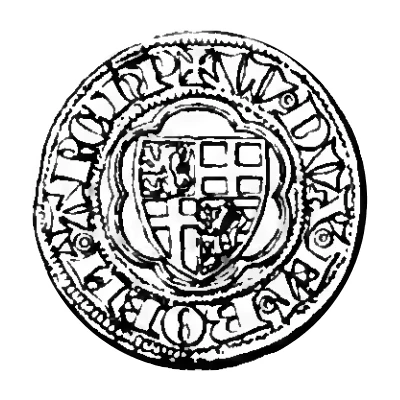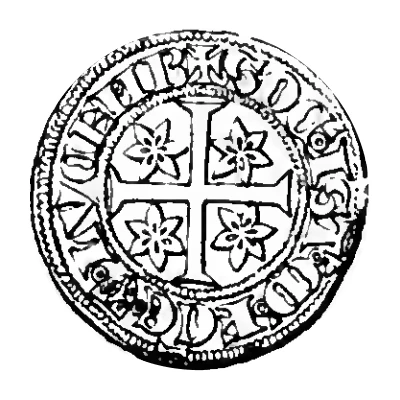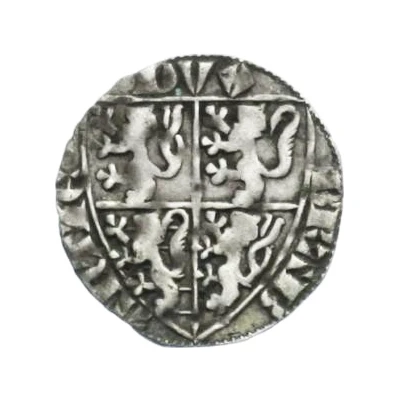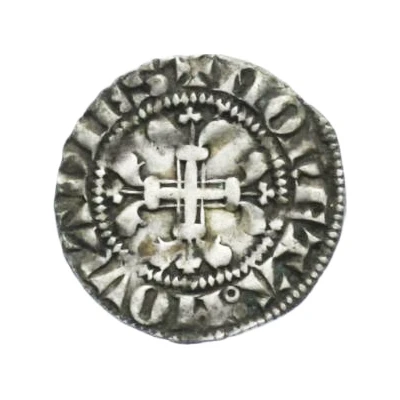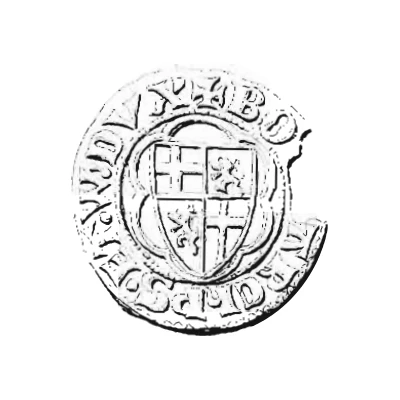
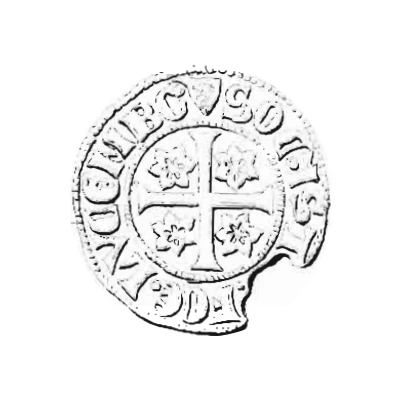

© M. de la Fontaine, 1842
⅓ Gros - Wenceslaus I Luxembourg-Trèves ND
| Silver | 1.19 g | - |
| Issuer | Duchy of Luxembourg (Luxembourg) |
|---|---|
| Duke | Wenceslaus I (1353-1383) |
| Type | Standard circulation coin |
| Years | 1359-1362 |
| Value | ⅓ Gros (1⁄120) |
| Currency | Florin (1353-1713) |
| Composition | Silver |
| Weight | 1.19 g |
| Shape | Round (irregular) |
| Technique | Hammered |
| Demonetized | Yes |
| Updated | 2024-10-06 |
| Numista | N#95801 |
|---|---|
| Rarity index | 95% |
Reverse
Patted long cross, quartered with four stars with six points, perforated.
Legend between two pearled circles.
Script: Latin (uncial)
Lettering: SOC' IST'₀ M'₀ FCE₀ LVCEMBG'₀
Lettering (regular font): SOC' IST'₀ M'₀ FCE₀ LVCEMBG'₀
Translation:
Socii istius monetae factae in Lucemburgo
Solidarity money struck in Luxembourg
Comment
Third of a gros, only 3 copies listed, struck between 1359 and 1362 at the Luxembourg City mint.1/3 gros = 1/60 golden florin
1/3 gros = 10 deniers
Treditory version of the agreement with Luxembourg, see for the Luxembourg version.
M. de la Fontaine, as well as Bernays and Vannerus had taken this coin at the time for a demi-gross.
The observations made by Weiller contradict this assumption and prove that it is indeed a third of gros.
Coin from the monetary union between Wenceslaus I, Duke of Luxembourg (1353-1383) and Bohemond of Saarbrücken, Archbishop of Trier (1354-1362). "On October 31, 1359, Wenceslas concluded a very close alliance with Bohemond of Saarbrück. The striking of a social coin was the consequence of this good diplomatic agreement" (Bernays and Vannerus, 1910).
From this alliance results the striking of 2 gros, 2 tiers and 2 sixth of gros, each time a version tréviroise and a luxembourgish, recognizable by the difference on the shield and the legend. The shield is quartered so that the first quarter is always occupied by the one at the beginning of the legend. In this case (version tréviroise), first district of Trier and beginning of legend of archbishop.
(for the Luxembourgish version, first district of Bohemia and Wincel at the beginning of the legend).
Bohemond dies quickly, the alliance was renewed with his successor but does not seem to have generated the production of coins.
The weight of the three coins listed was: 1.16 g. 1.18 g. and 1.25 g. (Weiller, p. 69)
Quite a few variants of legend and punctuation are known. The reverse exists without a point at the end of the legend.
Source: the illustrations on this page come from the article written by M. de la Fontaine and published by the RBN in 1842, pl. XV, fig. A2.
Interesting fact
One interesting fact about the ⅓ Gros coin is that it was issued during the reign of Wenceslaus I, who was the Duke of Luxembourg and also the King of the Romans. This coin was minted during a time of great political and economic change in Europe, and it features an image of Wenceslaus I on one side and the Luxembourg coat of arms on the other. Despite its small size, this coin was an important part of the economy of the Duchy of Luxembourg and was likely used in everyday transactions.
